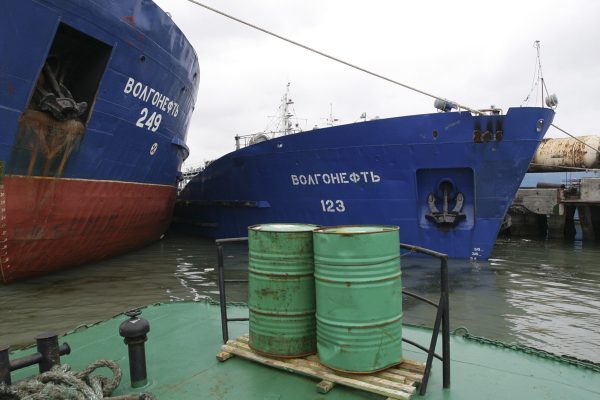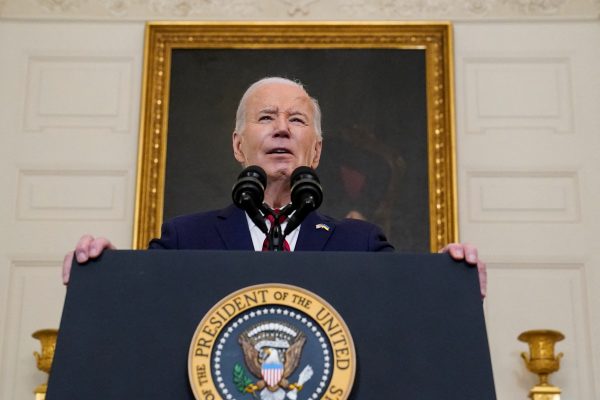Trumpdämmerung, or Trump anxiety, is on the rise across Europe. The fact that Ukraine has increasingly become a partisan issue in Washington has simply made the matter worse. While Kyiv has never enjoyed security guarantees analogous to those made under NATO’s Article 5, the recent turmoil has made it clear that even previously agreed geopolitical priorities are vulnerable to domestic politics.
The former Prime Minister of Belgium, the current MEP Guy Verhofstadt has suggested a European Defense Union as a solution in case a newly elected Donald Trump downgrades Article 5 and reduces the American commitment to Europe to the level of strategic ambiguity, so casting the continent into the purgatory of geopolitical uncertainty.
A defense union — an echo of the Western European Union (WEU), 1954-2011 — would be supported with European defense bonds and would remove the veto power of individual countries (to solve the Viktor Orbán problem), and an EU-UK security pact.
But whether a future closer European defense alliance takes this form, or some other (no matter if Trump returns or not) Europeans must do more.
An immediate issue is what Verhofstadt meant by “defense union”. A leading European federalist, his advocacy may cause misgivings in certain capitals, including but not limited to London and Washington.
While increasing European capabilities, interoperability, and readiness is certainly needed, doing this within an EU framework would not only create potential bureaucratic obstacles but might also cause a vicious circle of transatlantic distrust. Nothing would suit Putin better than Europeans themselves destroying NATO as a preventive measure. Suicide is not a better option than (brain) death.
Two years ago, this author wrote about the problematic role of the non-NATO members of the European Union from the perspective of Clausewitzian deterrence.
Since then, two countries under the most acute threat — Sweden and Finland — completed their alignment with the transatlantic community by applying for NATO membership. They did not suggest an expanded EU, they instead sought the protection of a highly successful 75-year-old military alliance.
NATO is the European framework for collective defense and so it should remain. That being said, a US “downgrade” is a real concern, and for the Eastern Flank, an existential threat.
The question is: how to Trump-proof NATO without accelerating the gradual decline of the remaining transatlantic ties?
We should refrain from creating parallel structures to replace or mimic NATO, and Europe, including the UK, must signal an ironclad commitment to Article 5.
The solution might be to begin with a political declaration establishing an enhanced security partnership pact, consisting of European NATO members. This would serve as a coalition of the willing and create a political structure for European defense if the alliance is unable to act in the face of Russian aggression.
The organization could exclude Hungary and other problematic allies. More important than that, it should reject any suggestion of full unanimity. Ultimately, it is for every state to decide how to participate in collective defense if a major crisis hits, but refusing to join collective action should be understood to have costs. The new pact might also define sanctions for any self-sabotaging members should populist governments come to power in the future (see Slovakia’s recent mercurial behavior on Ukraine.)
European defense bonds are a good idea and should be initiated quickly. This can be done within the framework of the European Union.
Given Trump’s transactional approach and strong emphasis on economic relations, around a third of these funds should be reserved for transatlantic military cooperation, technological projects, and weapons sales. It would increase European strategic autonomy without neglecting the US as the most important ally of the Old Continent.
If the options are US ambiguity and a full transatlantic break, ambiguity is much preferable for both Americans and Europeans. European NATO is simply not ready to fight and may not be for a decade. Should the US downgrade its alliance commitments, it would be to have an ironclad intra-European commitment strengthened by American troops along the Eastern flank.
If deterrence fails — and it will fail unless Europe does more on its own behalf — there will be war. It hardly needs to be said that this would inflict terrible losses not only in terms of human life but also of Western credibility and economics.
Another option is the Finlandization of Europe: Russia uses a set of economic, political, and informational blackmail, corruption, and military threats to divide and subjugate the continent without firing one shot.
Should this happen, the US would lose its most important ally, biggest trading partner, and likely ally in the century-defining struggle with China. Surely an under-gunned Europe and an inward-looking America can agree that this outcome makes no sense whatsoever.
Pekka Virkki is a Helsinki-based journalist and bestselling author (The Autopsy of Post-Finlandization, 2023) specializing in the Baltic Sea region and security. He holds an MA in Social Sciences (International Relations and Regional Studies, University of Tartu) and is finalizing an MSSc (European and Nordic Studies) at the University of Helsinki.
Europe’s Edge is CEPA’s online journal covering critical topics on the foreign policy docket across Europe and North America. All opinions are those of the author and do not necessarily represent the position or views of the institutions they represent or the Center for European Policy Analysis.





